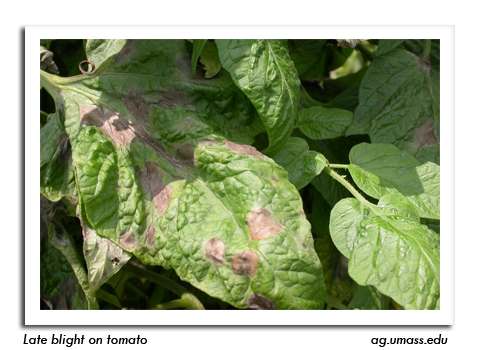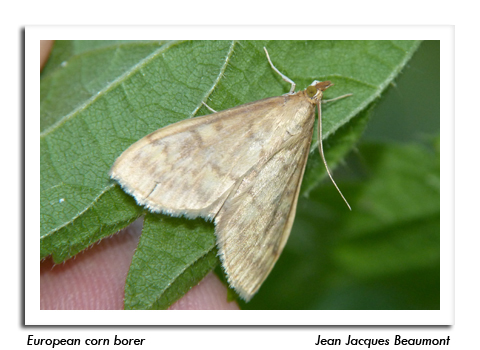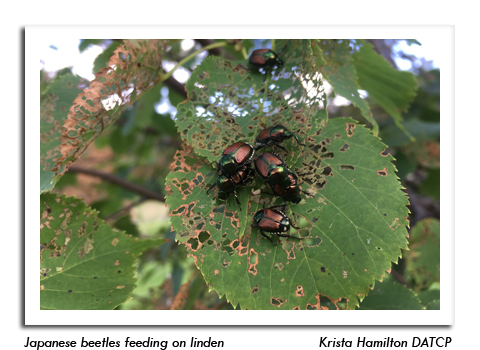
 |
|
|
Looking Ahead
Volume 64 Number 15 Date 08/08/2019 WESTERN BEAN CUTWORM - The annual flight has peaked in all areas south of Highway 29. Black light and pheromone trap counts should begin to decrease in the southern two-thirds of Wisconsin now that degree day accumulations are well past 2,838 (modified base 38°F/max 75°F), the point at which 75% emergence is expected. By contrast, the peak has yet to occur in the northern one-third of the state. The highest individual trap count for the week was 258 moths at Princeton in Green Lake County. The cumulative state count to date is 3,054 moths in 57 traps, or approximately 52 per trap. SOYBEAN APHID - Routine monitoring of soybeans is advised as fields enter the critical pod-filling stages. Most sites sampled by DATCP this week still contained very low average counts of less than 10 aphids per plant, though a few fields had moderate averages approaching 50 aphids per plant. Foliar treatment should not be considered until soybean fields have been thoroughly sampled to determine if the established threshold of 250 aphids per plant on 80% of the plants has been exceeded. LATE BLIGHT - Fresh market tomato producers and home gardeners are advised to increase monitoring of plants for signs of late blight infection. As of August 8, this disease has been confirmed on tomato in La Crosse County and on potato in Portage and Wood counties. Plants showing symptoms of late blight cannot be saved and should be disposed of in plastic bags to prevent the disease from spreading. Symptomatic potato and tomato plants may be submitted for free testing to the UW Plant Disease Diagnostic Clinic: https://pddc.wisc.edu/sample-collection-and-submission/. EUROPEAN CORN BORER - The degree day model for this pest suggests that the summer flight has peaked throughout much of southern Wisconsin. Susceptible corn should be inspected for egg masses and larvae before 2,100 degree days (modified base 50°F) have been surpassed and the treatment window for second-generation corn borers closes. JAPANESE BEETLE - Damage has intensified in field, fruit, nursery and vegetable crops. As an indicator of the prevalence of this insect this summer, beetles have been observed in about 72% (72 of 101) of the soybean fields and 35% (34 of 97) of the corn sites sampled August 1-7. Defoliation rates are generally below the 20% economic threshold for reproductive soybeans, and light to moderate silk clipping is common in the edge rows of corn. CORN EARWORM - Minor migration flights into Wisconsin continued again this week. The August 1-7 count of 67 moths at nine pheromone trap locations is a decrease from last week's total of 179 moths in 11 traps, but even captures of 5-10 moths for three nights in a row are considered significant enough to prompt protective treatment of silking sweet corn. BASIL DOWNY MILDEW - This rapidly-spreading, destructive disease has become more prevalent in the last two weeks. The first basil downy mildew (BDM) case of the 2019 season was confirmed by the UW in mid-July, and DATCP surveys indicate the disease is now developing in Dane and Milwaukee County community gardens. If basil downy mildew is suspected, harvesting early may be the best option for avoiding total crop loss. Plants that are already showing noticeable BDM symptoms, such as yellowing leaves and gray downy growth on the lower leaf surface, should be immediately removed and disposed of off-site. -- Krista Hamilton, DATCP Entomologist 



.jpg)
.jpg)
|
|
|